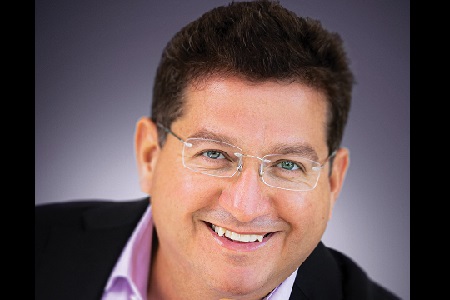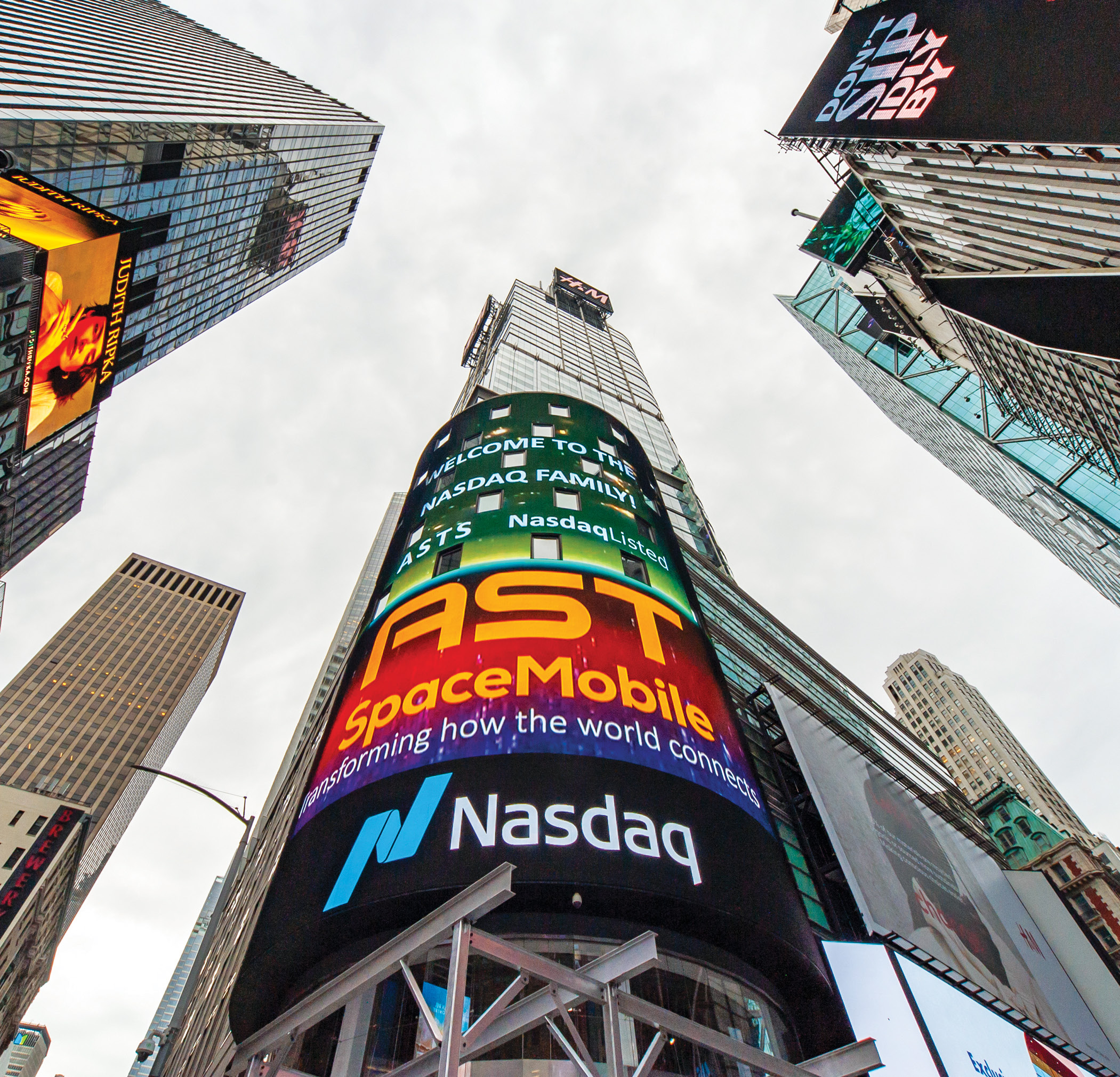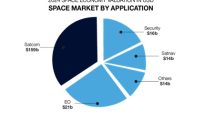 Abel Avellan officially launched AST SpaceMobile in May 2017 with the intention of providing cost-effective, high-speed mobile services with global coverage to all end users, regardless of where they live or work, and without the need to purchase special equipment. The company’s mission is to eliminate the connectivity gaps faced by today’s 5bn mobile subscribers moving in and out of coverage zones, and bring cellular broadband to the approximately half of the world’s population that remains unconnected.
Abel Avellan officially launched AST SpaceMobile in May 2017 with the intention of providing cost-effective, high-speed mobile services with global coverage to all end users, regardless of where they live or work, and without the need to purchase special equipment. The company’s mission is to eliminate the connectivity gaps faced by today’s 5bn mobile subscribers moving in and out of coverage zones, and bring cellular broadband to the approximately half of the world’s population that remains unconnected.
You say you will be the first to deploy a space-based cellular broadband network globally, but isn’t that what all LEO players are hoping to do?
SpaceMobile is different from other LEO players as it will be the first global space-based cellular broadband network using low-Earth orbit satellites to provide connectivity to any standard, unmodified, off-the-shelf mobile phone or 2G/3G/4G LTE/5G and IoT-enabled device.
Some companies are using LEO to deliver broadband internet to rural homes and businesses. It’s a great mission – equivalent to providing WiFi to these locations – but it requires special equipment to talk to the satellites. SpaceMobile, on the other hand, plans to provide broadband internet directly to smartphones without any modifications, software or additional equipment.
We believe AST’s satellite designs and components will reduce the communication delay effects experienced with existing geostationary satellite systems. SpaceMobile is intended to provide global, direct-to-device space-based cellular broadband coverage for users living in and travelling in and out of areas without terrestrial mobile services on land, at sea or in flight.
Partners in this effort are leading global wireless infrastructure companies including Rakuten, Vodafone and American Tower. As of today, AST SpaceMobile has entered into agreements and understandings with mobile network operators which collectively cover about 1.5bn mobile subscribers.

What are your commercial objectives?
Our technology is designed to be very flexible, and we anticipate many potential markets and use cases. We are currently focused on helping mobile network operators offer their subscribers connectivity in areas where their phone would otherwise lose service. This offering is designed to eliminate the network gaps experienced by mobile phone users across the globe. While our service will have a different go-to-market strategy with each country we operate in, we expect our service will be valuable to most wireless subscribers, not just the unserved or underserved.
The use case for the unserved and underserved is obvious and compelling, both in developing markets and rural areas. We anticipate that our network will be capable of offering an affordable add on service to users. We also believe that the well-served mobile wireless user who like many of us experiences dropped calls daily, whether on the drive to work from the suburbs or because they happen to live in a neighbourhood just a little too far from the nearest cell tower, will also value this service. And for the subscribers who want to eliminate all gaps in connectivity, SpaceMobile is expected to provide access while travelling by air, land and sea.
What will it entail in terms of technology – spacecraft, constellation, ground infrastructure – to achieve those goals?
SpaceMobile’s satellites will orbit in LEO more than 50 times as close as a GEO satellite. This allows high-speed, near-real-time communication. The signals from LEO arrive stronger and take a fraction of the time to make the trip.
SpaceMobile is designed to mimic terrestrial cellular network hardware, and each BlueBird production satellite will have a thin, low profile. We plan to stow these spacecraft in a compact configuration and then deploy the array once in orbit.
The size of the BlueBird spacecraft, their configuration and their relatively close distance to Earth are designed to allow the SpaceMobile network to communicate directly with smartphones on the ground. Additionally, our approach means SpaceMobile won’t need thousands of satellites to close cellular coverage gaps that affect billions of people.
Phased-array antenna panel lining each BlueBird’s arrays will work together to deliver thousands of communications beams from the satellites to the ground. These beams are designed to connect directly with the phone in your pocket today, with no modifications to the phone. Our satellites will then provide backhaul traffic to ground infrastructure that connects with the mobile network operator that we partner with.

You will soon launch your second spacecraft prototype. How does it improve on the first?
On April 1, 2019, we launched our first test satellite, called BlueWalker 1, which validated our satellite-to-cellular architecture. The spacecraft successfully managed communications delays from LEO orbit and the effects of doppler in a satellite-to-ground cellular environment using the 4G-LTE protocol.
Our next prototype, BlueWalker 3, is expected to launch aboard a SpaceX mission from Cape Canaveral, Florida, during a launch window beginning in March 2022. The spacecraft has an aperture of 64sqm and is designed to communicate directly with cell phones on the ground via 3GPP standard frequencies.
How much funding have you raised so far?
AST SpaceMobile received $462m in gross proceeds in going public on April 6, 2021, and listing on the Nasdaq stock exchange under the ticker ASTS. These proceeds consisted of approximately $232m cash in trust from New Providence Acquisition Corp and approximately $230m from a PIPE investment, including investments from Rakuten, Vodafone, American Tower and UBS O’Connor.
How many people work at AST SpaceMobile, and what do you mainly focus on?
We have a team of 454 people – 261 full-time employees, 49 full-time contractors and 144 employees of third-party engineering service providers – working on the AST SpaceMobile mission as of August 16, 2021.
You seem to have a lot of patents.
We have more than 1,200 patent and patent-pending claims. These describe technologies designed to deliver broadband from space to unmodified mobile devices.
As a young company disrupting the world of mobile connectivity, can you shed light on some of the trends in the market in terms of connectivity and your vision for this space?
More than 5bn mobile devices are in use today, but connectivity is imperfect and people move in and out of cellular broadband coverage as they live, work and travel. What’s more, about half of humanity lacks cellular broadband service, either because people fall into a coverage gap where there’s no connectivity at all, or a usage gap where affordability and other factors create barriers to getting online.
SpaceMobile is designed to provide broadband speeds regardless of location and support the different use cases which come with a high-speed 4G or 5G connection. Our team of engineers and space scientists are on a mission to eliminate the connectivity gaps faced by mobile subscribers and bring broadband to the billions who remain unconnected.
Tell us more about your plans for the MEA region.
The GCC and the greater MENA region are surrounded by vast deserts, mountains and the Arabian Sea. While venturing into remote locations, it’s important to have reliable mobile connectivity. We are working with governments across the globe to meet universal connectivity goals and finally bridge the digital divide.
This technology is designed to allow people to connect at broadband speeds in the most remote location, on rural farmland or during a crisis or natural disaster. Users would access SpaceMobile when prompted on their device that they are no longer within range of their existing mobile provider’s land-based facilities. They might also be able to purchase a plan directly with their provider.
We hear you intend to have some of your satellite components manufactured in the UAE.
While our main manufacturing facility is based in Midland, Texas, we are looking for regional manufacturing partners around the globe – including within the MENA region – for our planned 168-spacecraft constellation of production satellites, called BlueBirds.
Prior to creating AST SpaceMobile, I founded Emerging Markets Communications in 2000 and led that company until its sale for $550m in 2016. EMC was an early player in the development of the UAE satellite industry, both as a large customer of Yahsat’s first satellite in 2011 and maintaining an office presence in Dubai.
Based on my years of experience working in the UAE, including a local space operations centre and engineering offices with EMC, we are very comfortable with the potential to find specialised component manufacturing partners in the region to help create our future BlueBird production spacecraft.

What’s the status of your LEO constellation, and when is it likely to be operational?
We plan to launch BlueWalker 3, a fully functional prototype satellite, aboard a SpaceX Falcon 9 rocket during a launch window beginning in March 2022. If that mission is successful, our plan is to start launching our first operational satellites by the end of 2022. This initial constellation, called Phase 1, is expected to provide coverage in the 49 equatorial countries, which have a total population of approximately 1.6bn people, with 20 satellites. We plan to achieve global coverage with the launch of 168 satellites in subsequent phases, along the way rolling out service to portions of North America, Europe, Asia, MENA and other regions.
How do you plan to distinguish yourself from the other players in your space?
We believe the SpaceMobile Service would be the first global direct mobile broadband network using LEO satellites to provide connectivity to any standard, unmodified, off-the-shelf mobile phone or cellular device.
However, we intend to partner with MNOs to offer SpaceMobile to their end-user customers. Our vision is that users will not need to subscribe to the SpaceMobile Service directly with us, nor will they need to purchase any new or additional equipment. Instead, users will be able to access our service when prompted on their mobile device that they are no longer within range of the land-based facilities of the MNO operator, or will be able to purchase a plan directly with their existing mobile provider.
To date, other satellite communications companies have employed a direct-to-consumer business model which requires the use of a sales force to sell their product directly to consumers, as well as installation services to install their specialised hardware. AST SpaceMobile, meanwhile, intends to employ a wholesale, business-to-business-to-consumer model.
AST is not aware of other satellite communications companies employing, or planning to employ, a similar wholesale business model for space-based cellular broadband services directly to mobile phones over spectrum allocated for terrestrial mobile use.
You mentioned partnerships with other mobile operators. How will your partnership benefit them? What will you bring to that pipeline?
Our space platform and gateway facilities are designed to provide MNOs with mobile service infrastructure in areas not well served by terrestrial networks. MNOs may benefit in multiple ways. For example, they could provide service to current and future customers in rural and remote areas where building out terrestrial network infrastructure is cost-prohibitive or practically impossible. Some hope to use our space-based network to measure demand for service in remote regions and help determine where future terrestrial infrastructure build-out may be warranted.
Will you be coming to CABSAT or to the space exhibition in October in the UAE?
We are hoping to attend.












Add Comment